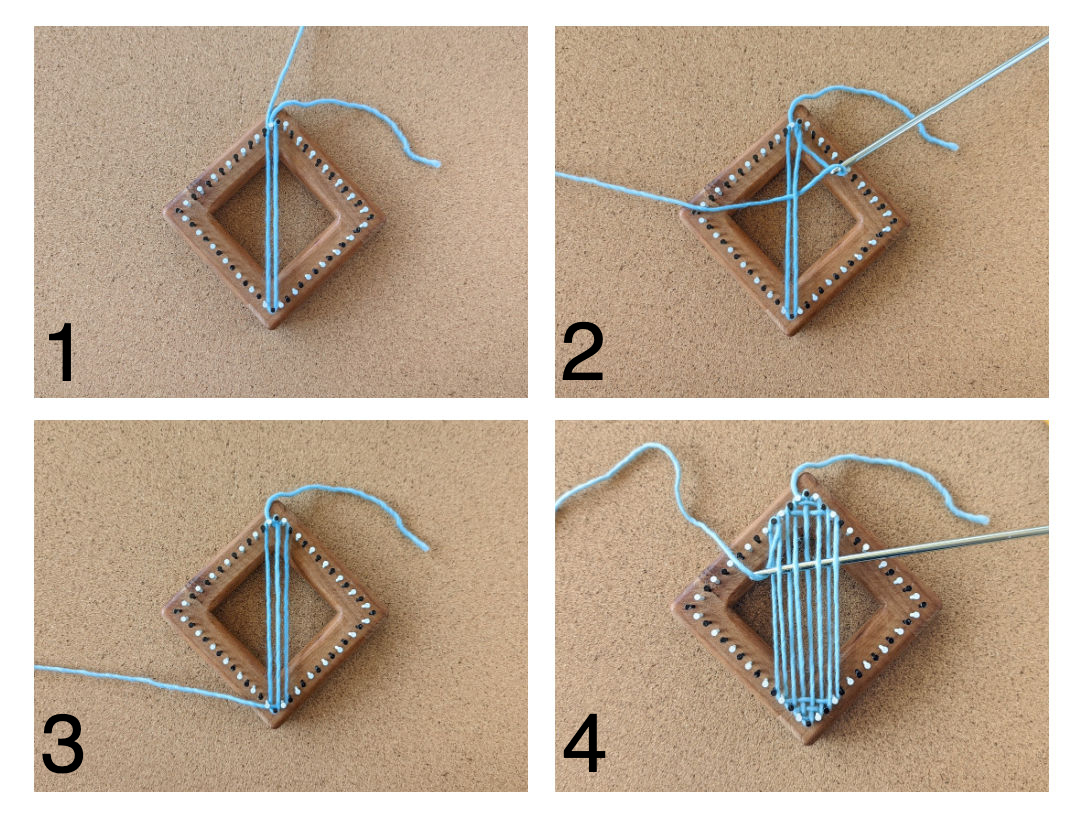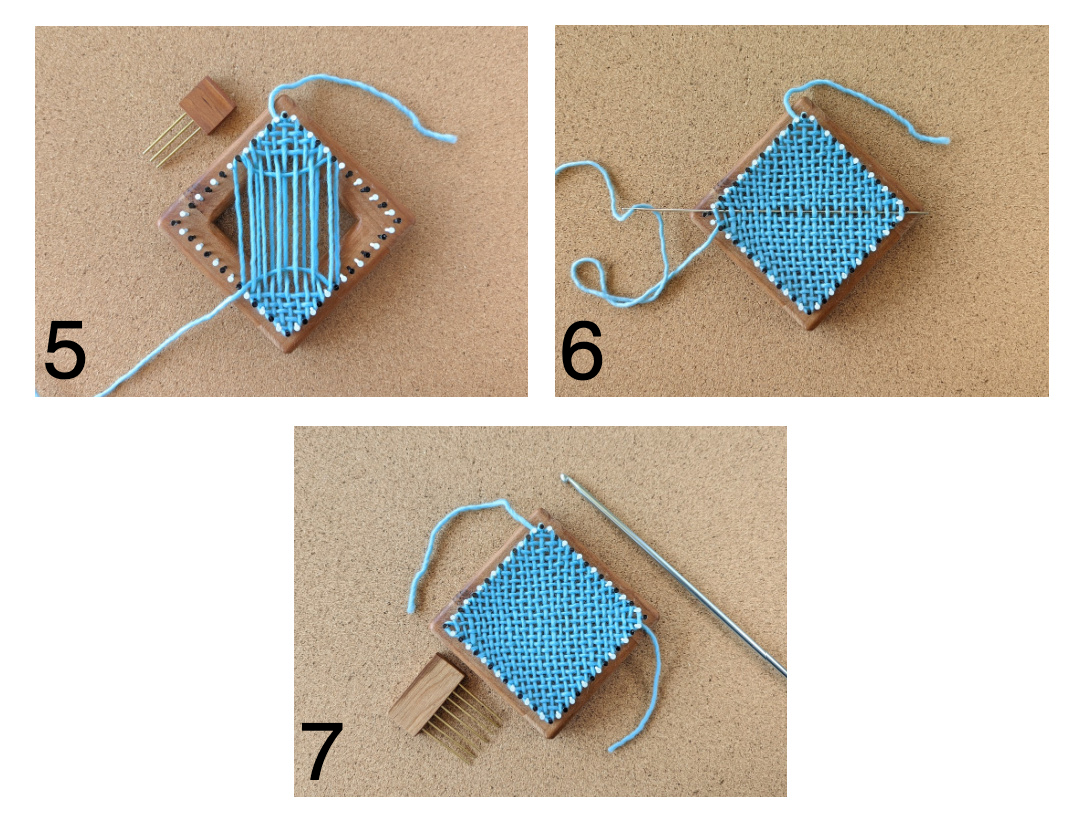Subscriber Exclusive
Tutorial: Continuous-Strand Weaving
Learn the basics of using the continuous strand–weaving method on a pin loom with this subscriber exclusive and then practice the technique with a free bonus project!
Learn the basics of using the continuous strand–weaving method on a pin loom with this subscriber exclusive and then practice the technique with a free bonus project! <a href="https://littlelooms.com/continuous-strand-weaving-101-with-bonus-project/">Continue reading.</a>
https://littlelooms.com/cdn-cgi/image/format=auto/https://www.datocms-assets.com/70931/1676409157-llsu21_ptrn_ebbandflowpillow_kmeadors.jpg?auto=format&w=900
Continuous-strand weaving, sometimes called bias weaving, is a great technique for weaving on your pin loom. While there are ways you can use this method on looms with the 3-pin configuration, you’ll usually see it done on pin looms with equidistant pins. With this method, you warp and weave at the same time.
If that sounds confusing, never fear! In this exclusive article for subscribers, we have instructions for weaving using the continuous-strand method from an article by Jennifer Chapman. And, we also have a free project download for the Ebb and Flow Pillow by Kay Meadors. This gorgeous pillow gets its painterly color changes within each square by weaving with a variegated yarn using the continuous-strand method. Click here
for a free subscriber-exclusive download and read on for Jennifer's article on how to use continuous-strand weaving on a pin loom. —Christina
SUBSCRIBER EXCLUSIVE
Continuous-strand weaving, sometimes called bias weaving, is a great technique for weaving on your pin loom. While there are ways you can use this method on looms with the 3-pin configuration, you’ll usually see it done on pin looms with equidistant pins. With this method, you warp and weave at the same time.
If that sounds confusing, never fear! In this exclusive article for subscribers, we have instructions for weaving using the continuous-strand method from an article by Jennifer Chapman. And, we also have a free project download for the Ebb and Flow Pillow by Kay Meadors. This gorgeous pillow gets its painterly color changes within each square by weaving with a variegated yarn using the continuous-strand method. Click here
for a free subscriber-exclusive download and read on for Jennifer's article on how to use continuous-strand weaving on a pin loom. —Christina [PAYWALL]
When pin-loom weavers are starting on their journey, they often begin with a 4" x 4" square loom. Soon they realize that, while you can make many projects using squares and clever folding, weaving only one shape is limiting. If looms in other shapes aren’t in the budget quite yet, there is a way to weave not only squares but also triangles and rectangles on a square loom: continuous-strand weaving.
Continuous-strand weaving is an exciting and efficient technique that simultaneously warps and weaves an evenly spaced pin loom with a single strand of yarn. The result is a zero-waste, bias-woven piece of fabric. This method can be used on looms of many shapes and sizes—squares, rectangles, triangles, hexagons, and even diamonds.
To start off, here’s the basic method for weaving on a square pin loom. You’ll need a pin loom with uniformly spaced pins, a packing fork, either a locker hook or a crochet hook, and a long weaving needle or blunt tapestry needle.
 Photo credit: Jennifer Chapman
Photo credit: Jennifer Chapman
1) Orient the loom as a diamond and attach the yarn onto the top nail with a slipknot.
2) Bring the yarn down to the right side of the bottom nail and around it clockwise, heading back up to the left side of the nail to the left of the starting nail (1).
3) Move the yarn clockwise around the nail.
4) Using a long crochet or locker hook, from the right, weave under the first strand and grab your working yarn (2).
5) Pull the yarn across and loop it over the nail to the right side of the starting nail.
6) Bring the working yarn down and hook it around the nail to the right of the bottom nail (note that the weaving comes down with you) and across to the nail to the left of the bottom nail (leave a slight arc in the yarn). The first pass is now completed (3).
 Photo credit: Jennifer Chapman
Photo credit: Jennifer Chapman
7) Bring the yarn back up and hook it around the nail to the left of the previous nail used.
8) Repeat this process, going around and around the square. Weave under and over the existing rows with the hook to place each new row, and use a packing fork to push down the arc in each row and to make sure the rows stay level and even (4 and 5).
9) When there is just one row left to weave, cut the yarn, leaving enough to weave the last row. Thread the yarn tail on a long needle or locker hook and weave across (6 and 7).
10) Carefully remove the completed fabric from the loom.


 Photo credit: Jennifer Chapman
Photo credit: Jennifer Chapman Photo credit: Jennifer Chapman
Photo credit: Jennifer Chapman